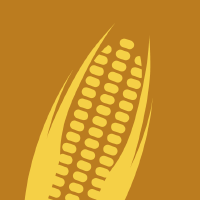Topic Editors


Plant-Soil Interactions, 2nd Volume
Topic Information
Dear Colleagues,
Following the successful completion of Volume I of “Plant–Soil Interactions” and the great interest in this research topic, we are pleased to announce the launch of Volume II. Biological fertilizers are substances that contain microorganisms that, when applied to seeds, plant surfaces, or soil, colonize the rhizosphere and promote plant growth by increasing the supply of primary nutrients to the host plant. Research has shown that biofertilizers have different effects in various environments, and even within the same one. A number of scientists have been working on solving this problem, but no perfect solution has yet been found. Despite their satisfactory effects in drier climates, biofertilizers are likely to be better controlled and regulated in all environments in the future. Therefore, it is necessary to enhance knowledge on this subject. The aim of this Special Issue is therefore to promote research surrounding the use of microorganisms in improving plant growth and protection against biotic and abiotic stresses.
Dr. Fernando Monroy
Dr. Domenico Prisa
Topic Editors
Keywords
- soil ecology
- rhizosphere
- mycorrhiza soil-borne pathogens
- sustainable agriculture
Participating Journals
| Journal Name | Impact Factor | CiteScore | Launched Year | First Decision (median) | APC | |
|---|---|---|---|---|---|---|

Agriculture
|
3.6 | 3.6 | 2011 | 17.7 Days | CHF 2600 | Submit |

Agronomy
|
3.7 | 5.2 | 2011 | 15.8 Days | CHF 2600 | Submit |

Crops
|
- | - | 2021 | 30.5 Days | CHF 1000 | Submit |

Diversity
|
2.4 | 3.1 | 2009 | 17.8 Days | CHF 2600 | Submit |

Plants
|
4.5 | 5.4 | 2012 | 15.3 Days | CHF 2700 | Submit |

MDPI Topics is cooperating with Preprints.org and has built a direct connection between MDPI journals and Preprints.org. Authors are encouraged to enjoy the benefits by posting a preprint at Preprints.org prior to publication:
- Immediately share your ideas ahead of publication and establish your research priority;
- Protect your idea from being stolen with this time-stamped preprint article;
- Enhance the exposure and impact of your research;
- Receive feedback from your peers in advance;
- Have it indexed in Web of Science (Preprint Citation Index), Google Scholar, Crossref, SHARE, PrePubMed, Scilit and Europe PMC.

